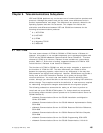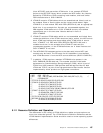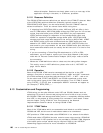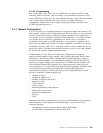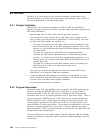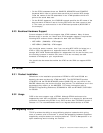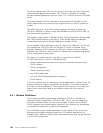The 3174 with a Token-Ring or Ethernet adapter provides direct
connection to Token-Ring and Ethernet LANs.
The Open Systems Adapter (OSA) on the CMOS processors
provides direct connection to Token-Ring, Ethernet and FDDI LANs.
It also supports native ATM connections for VTAM V4R4 and above.
The 3172 Interconnect Controller provides direct attachment to
Token-Ring, Ethernet and FDDI LANs.
A 37XX controller with NCP provides SNA connectivity for larger
networks over Token-Ring and Frame Relay attachments.
•
Workstation Subsystem Controller (6120)
This adapter is actually a 3174 on a card. Although MVS/VTAM
supports this adapter, if the migration includes a processor
upgrade, a replacement for this adapter must be found. Options
include the use of the integrated console facility of new generation
CMOS processors or a channel attached 3174 communications
controller.
2
OS/390 VTAM provides SNA Network Interconnection (SNI) capability which
is not available in VSE VTAM. SNI:
•
Connects multiple independent subarea SNA networks together
•
Isolates the topologies of the networks, thus making security easier to
enforce and administration simpler
•
Permits sessions between any resources in the connected networks,
provided the installation has allowed them
SNI is particularly beneficial when you need to link your SNA network with
that of another organization such as a business partner or a value-added
network supplier.
3
OS/390 VTAM provides high-performance routing (HPR) over APPN
connections. HPR has the following benefits:
•
More efficient transport over high-speed connections, due to the
improved routing and flow control algorithms.
•
Nondisruptive session rerouting around failing nodes or links.
•
Less processing power required for intermediate nodes on a session
path.
•
For APPN and HPR networks, there is a range of multi-protocol routers
available: the 2210, 2216 and 3746 in increasing order of power and
complexity.
4
OS/390 VTAM running in a sysplex provides some functions that are only
available in that environment:
•
VTAM to VTAM communication using the cross-system coupling facility
(XCF) of OS/390. XCF allows all the VTAMs in a sysplex to communicate
with each other without requiring any definitions, and without the need
to dedicate channel-to-channel connections to SNA traffic.
•
Generic resources. This gives improved performance and availability by
balancing application load across sysplex images, in a manner
transparent to the user.
•
Multi-node persistent sessions. This permits sessions to survive a
failure in application, VTAM, OS/390 or even a processor in a sysplex
Chapter 9. Telecommunications Subsystems 189







